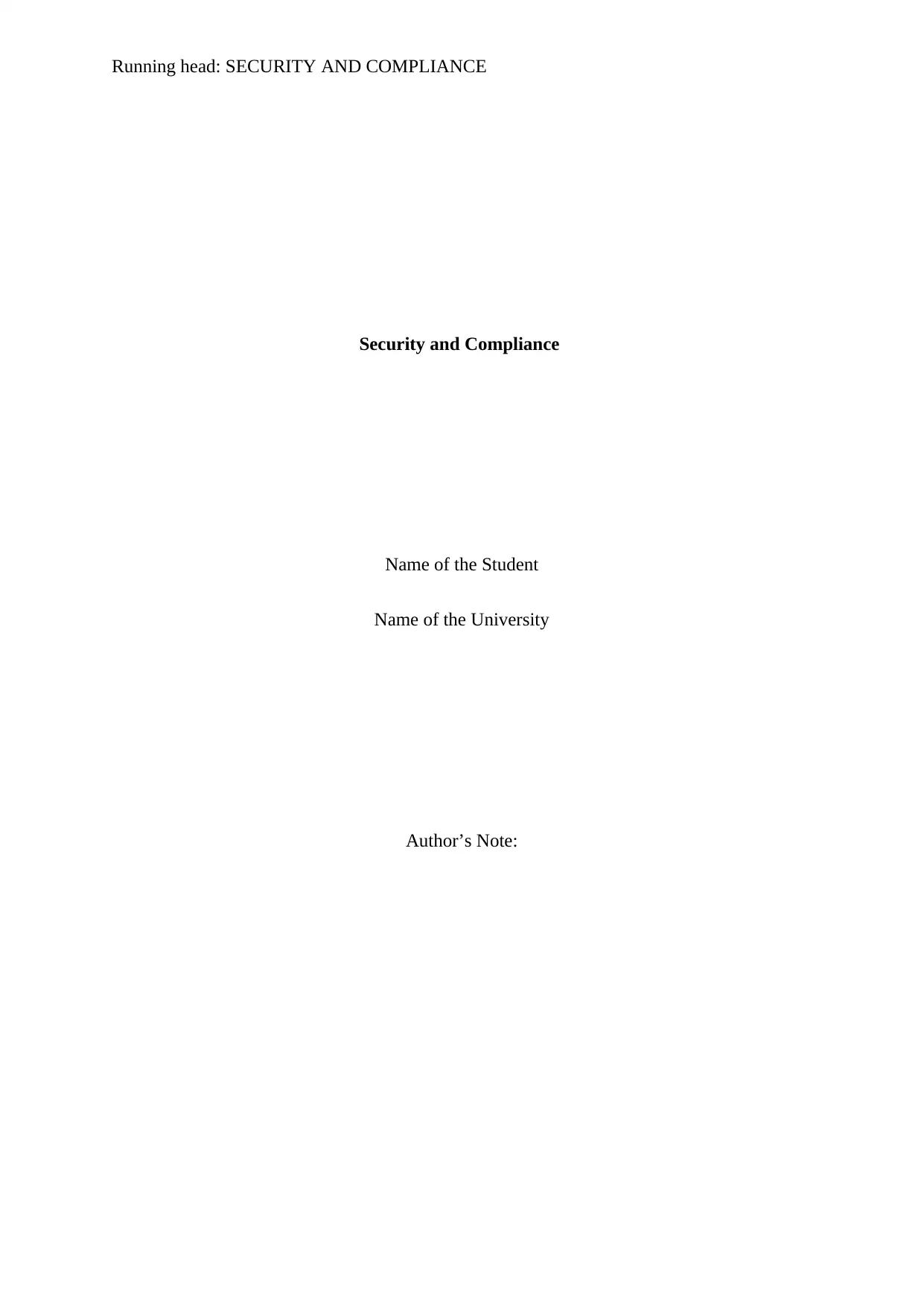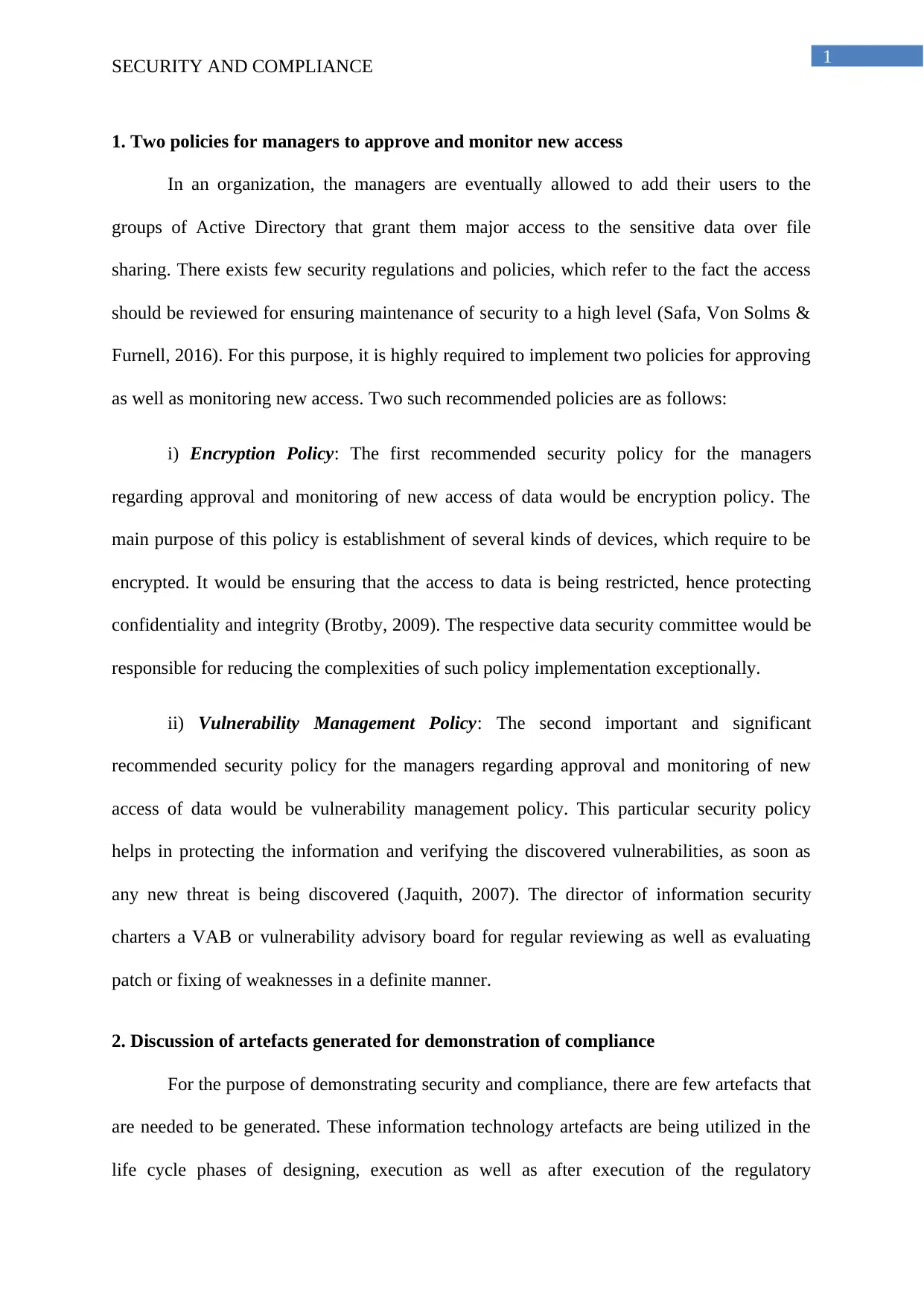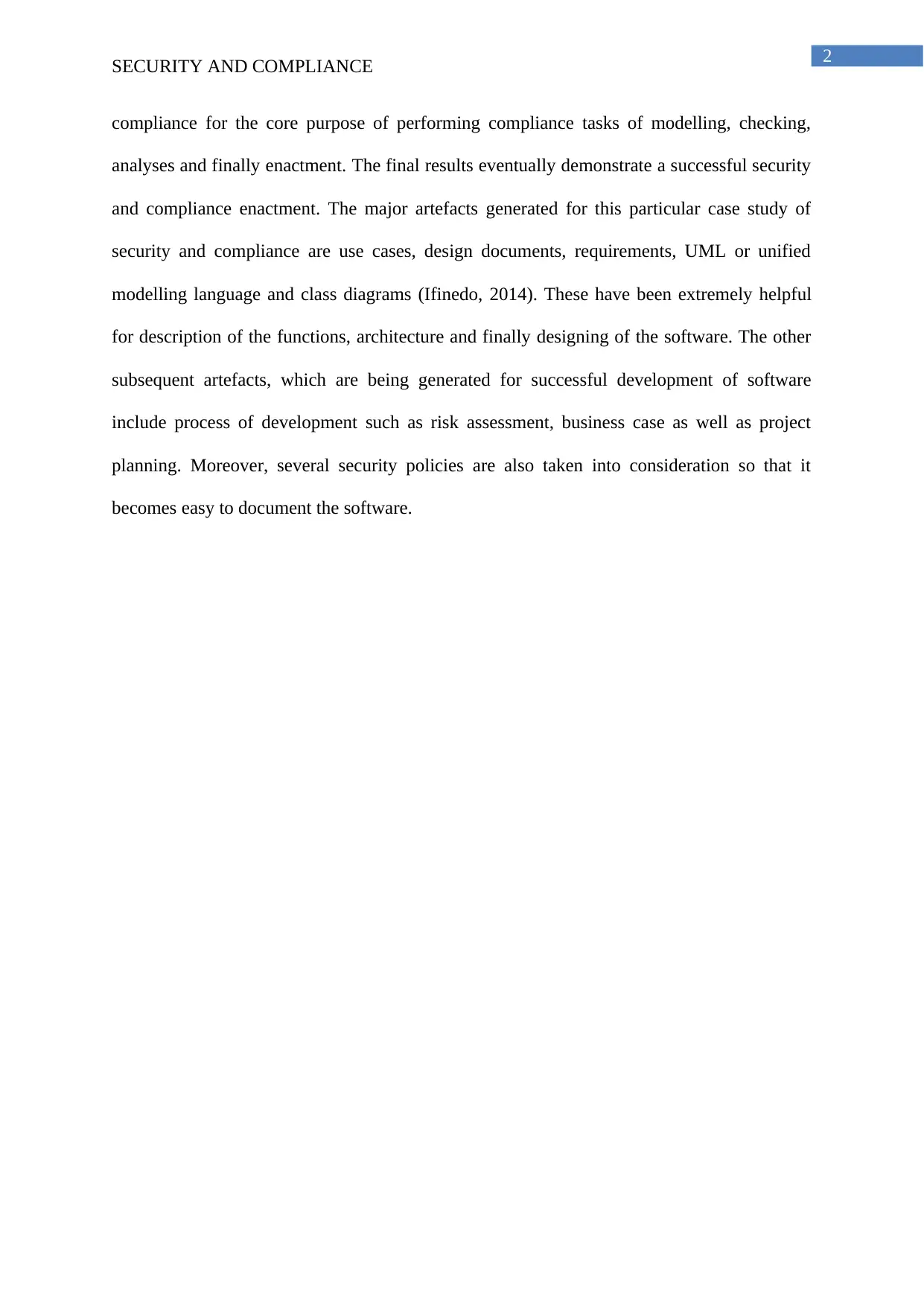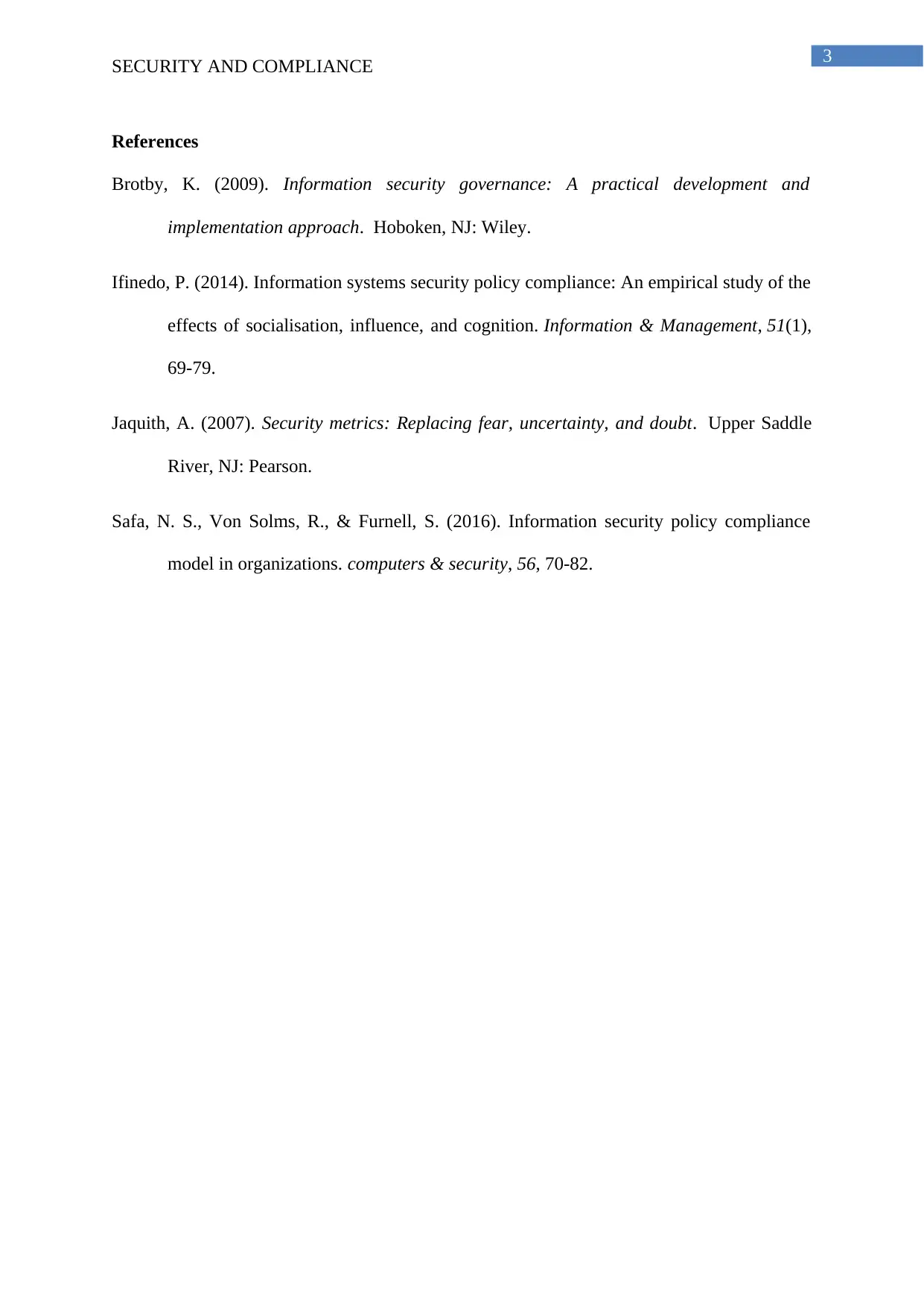University Security and Compliance Assignment: Policies & Artefacts
VerifiedAdded on 2022/11/15
|4
|632
|163
Homework Assignment
AI Summary
This assignment addresses key aspects of security and compliance within an organizational context. It proposes two essential policies for managers: an encryption policy to restrict data access and protect confidentiality, and a vulnerability management policy to address and mitigate potential threats. The assignment also discusses the artefacts generated to demonstrate compliance, including use cases, design documents, and UML diagrams, which are vital for the design, execution, and post-execution phases of regulatory compliance. These artefacts aid in modelling, checking, analyzing, and enacting compliance tasks, ultimately demonstrating successful security and compliance implementation. The assignment draws on referenced literature to support its arguments and recommendations.
1 out of 4











![[object Object]](/_next/static/media/star-bottom.7253800d.svg)